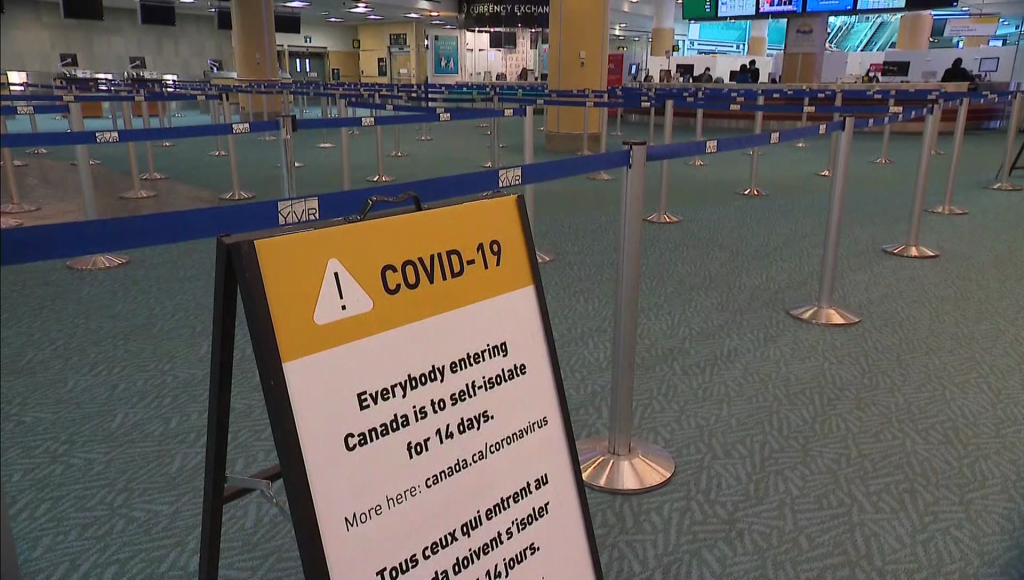Canada border restrictions reduced imported COVID cases, but couldn’t stop outbreaks: study

Posted August 2, 2022 2:45 pm.
Last Updated August 2, 2022 2:53 pm.
Canada’s border restrictions had quite the impact on keeping the number of COVID cases entering the country down, according to the findings of a UBC-led study.
Lead author Angela McLaughlin says when Canada closed its borders in March 2020, there was a “drastic reduction in viral importations.”
“About 10-fold fewer viral importations within four weeks of the border closing,” she told CityNews.
Of the “viral importations” in the first wave, researchers believe 49 per cent likely came from the U.S., “and were primarily introduced into Quebec and Ontario.”
Eventually, more cases did break through.
“While there was this drastic reduction in new viral introductions, there was a trickle of importations though the spring, the summer, the fall of 2020. Some of those did take root and led to new outbreaks,” McLaughlin said.
The outbreaks that were introduced that summer were quickly replaced by variants of concern the following winter.
Related articles:
-
What’s really going on at Toronto’s Pearson airport?
-
What it means if you’re randomly selected for a COVID test at the airport
“In the second COVID wave, the USA was still the predominant source of viral entry, at 43 per cent, alongside a larger contribution from India, 16 per cent, and the UK, at seven per cent,” researchers said.
The key takeaway, McLaughlin says, is border restrictions can keep cases down, “with few exemptions, in the absence of rapid testing, which was the case in the first two waves.”
“However, they can have a diminishing return if the domestic prevalence in Canada of COVID is quite high,” she added.
The study took two years to complete. It was published on eLife on Aug. 2, 2022.








